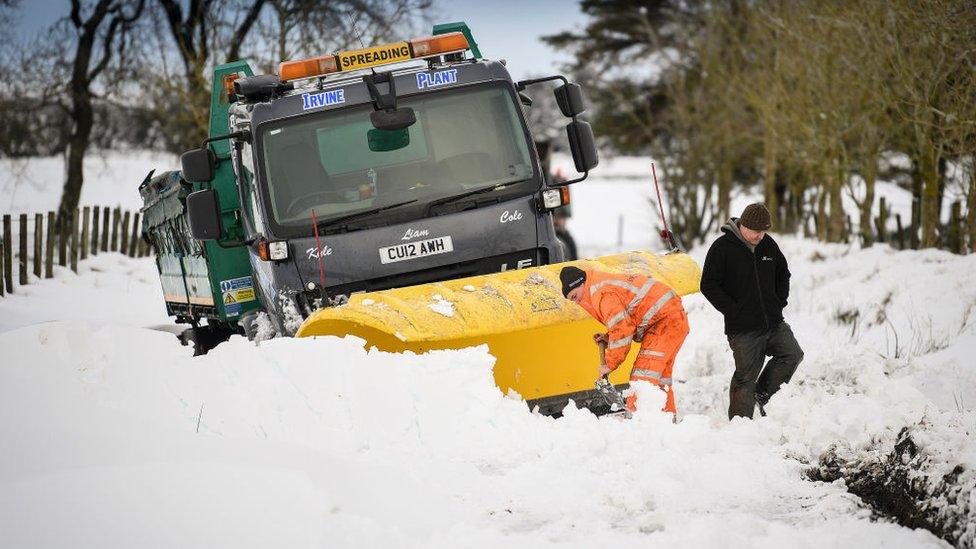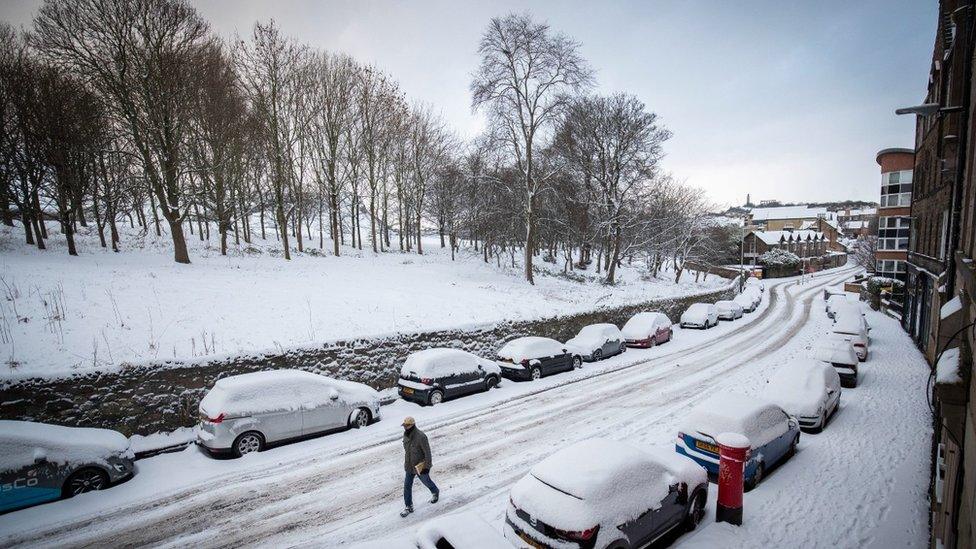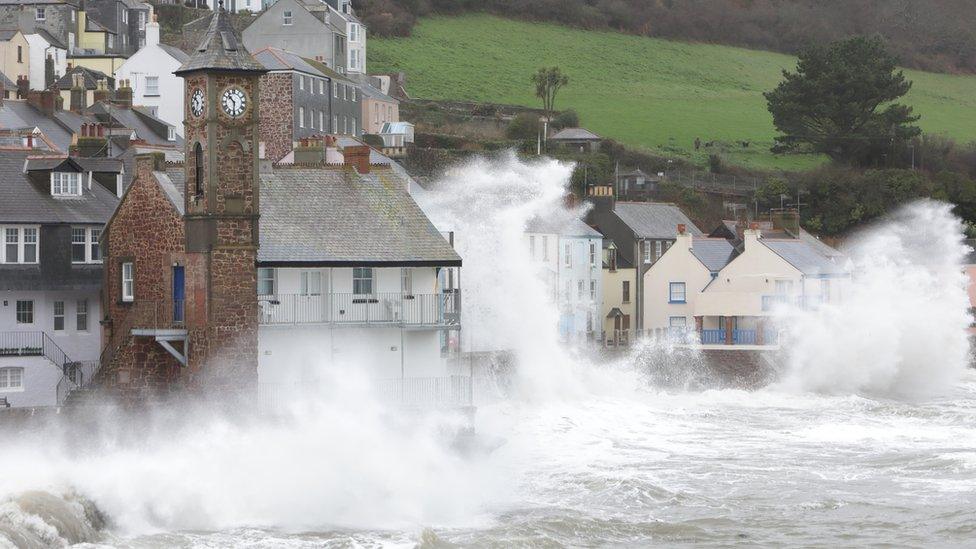What is happening with Scotland’s weather?
- Published

Higher temperatures will be the new normal, the Met Office says
Scotland faced its most extreme temperatures last year, according to a new report from The Met Office.
Forecasters said the country recorded its coldest winter since 2011 and hottest month since 2013.
The west of Scotland was far drier than usual while the east was wetter.
The annual State of the UK Climate report, external says higher temperatures are the new normal and highlighted the ways that climate change is affecting the UK.
Colder winters

The snow plough got stuck in a drift in Lamancha in the Scottish Borders in January 2021
Scotland experienced its coldest winter since 2011 last year.
The west of Scotland had a colder, drier and sunnier winter than average.
But temperatures south of the border were near normal for most of the winter.
However January was the UK's coldest January since 2010 - and the coldest month since March 2013.
Warmer summers

Families enjoyed the sunshine at Coldingham Sands in summer 2021
Scotland, alongside Northern Ireland, had its warmest month in eight years in July 2021.
Temperatures across the UK widely reached 30C and the Met Office issued its first extreme heat warning.
However August was much cooler and most UK stations failed to reach 25C at any point in the month.
The highest temperature recorded was 27.2C at Tyndrum in Perthshire during a week of hot weather in the west of Scotland towards the end of the month.
Sunshine totals were also above average across most of western Scotland in 2021.
However the north of Scotland had the dullest autumn on record with just 70% of the average sunshine seen during the previous decade.
Less rainfall
Western Scotland was drier than usual, with less than 85% of the average rainfall recorded across most of the area.
Altogether the west of Scotland had about 30 days of rain fewer than the average.
However most of eastern Scotland recorded more rainfall than usual, especially during the winter months.
For much of England and Wales, rainfall was also near or above average.
The Met Office recorded 1,104mm (43in) total rainfall in the UK, which is 95% of the 1991-2020 average.
Scotland faced particularly heavy rain in February and March which caused travel disruptions, flooding, fallen trees and debris and some road closures.
After this, April was largely dry for many areas.
Less than 70% of the average rainfall was recorded for the five month period from April to August.

The level of the River Ness, which flows from Loch Ness, was described as exceptionally low in July 2021
Scotland also recorded its driest summer since 1995.
By the end of August some river and reservoir levels were very low.
Many parts of the north and west of Scotland received less than half the normal rainfall for summer.
But the summer was drier than average for most of the UK except the southeast - but not quite as dry as the summer of 2018.
October was particularly wet across parts of southwest Scotland. However, November was drier.
Heavier snowfall

Snow covers the streets in Holyrood in Edinburgh
Parts of Scotland recorded the UK's deepest snowfall of 2021 in February.
The deepest lying snow was around Edinburgh, Fife, Angus, Kincardineshire and Aberdeenshire with depths of 20-30cm (8-12in) or more.
This included 38cm (15in) at Aboyne in Aberdeenshire, 35cm (14in) at Fettercairn in Kincardineshire, 26cm (10in) at Mylnefield in Angus and 23cm (9in) at Penicuik in Midlothian.
Extreme weather

Trees submerged in the River Teviot in Hawick in October 2021
Scotland faced periods of severe weather during 2021.
There was unusually heavy and persistent rain across parts of southern Scotland towards the end of October.
This led to a major incident being declared in Hawick due to rising water levels on the River Teviot.
Plans were even in place to evacuate local residents.
The Met Office also issued a red warning for Storm Arwen in November, which was one of the most damaging winter storms of the latest decade.
There were three fatalities and several hundred thousand homes were left without power.
Large numbers of mature trees were also brought down across the UK.
There were five named storms in 2021: Christoph in January, Darcy in February, Evert in July, Arwen in November and Barra in December.
But the number of storms was actually low when compared to previous decades.


This report provides some interesting nuggets about Scotland's weather in 2021.
What it shows is that despite it being an "unremarkable" year, there's still plenty to remark upon.
While most of the UK was wetter than average, western Scotland was much drier.
But this is just a snapshot of a single year and its actually more important to consider longer term trends.
In fact it's eastern Scotland which has become much drier over time while the west is experiencing increasing rainfall.
Already that's being borne out in 2022 where most of the eastern half of the country has been experiencing low water levels with little sign of it improving.

Related topics
- Published28 July 2022

- Published3 July 2023
